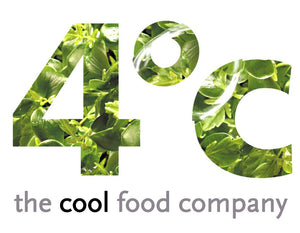{"id":7470130430128,"title":"Celeriac (Each)","handle":"celeriac-each","description":"\u003cstrong\u003eDescription\/Taste:\u003c\/strong\u003e\u003cbr\u003eCeleriac, also known as celery root, is a knobby, brown-skinned vegetable with a rough, earthy exterior. Beneath its rugged surface lies a pale, creamy flesh that offers a subtle, nutty flavour with hints of celery and parsley. Its texture is similar to that of a potato, firm but yielding when cooked.\u003cbr\u003e\u003cbr\u003e\u003cstrong\u003eSeasons\/Availability:\u003c\/strong\u003e\u003cbr\u003eIn the UK, celeriac is typically in season from September to April. Its cool-weather tolerance makes it a favourite winter root vegetable. While there's a local supply during its season, celeriac is also imported from various European countries to ensure consistent availability throughout the year.\u003cbr\u003e\u003cbr\u003e\u003cstrong\u003eUses \u0026amp; Flavour Pairings:\u003c\/strong\u003e\u003cbr\u003eCeleriac is versatile and can be consumed both raw and cooked. When raw, it can be grated into salads or slaws, offering a fresh, crisp bite. When cooked, celeriac can be boiled, mashed, roasted, or used in soups and stews. It pairs wonderfully with apples, walnuts, mustard, and creamy sauces.\u003cbr\u003e\u003cbr\u003e\u003cstrong\u003eNutritional Information \u0026amp; Allergens:\u003c\/strong\u003e\u003cbr\u003eCeleriac is a good source of dietary fibre, vitamin C, vitamin K, and phosphorus. It also contains beneficial antioxidants and is low in calories. It's naturally gluten-free. \u003cstrong\u003eAllergen: Celery\u003c\/strong\u003e\u003cbr\u003e\u003cbr\u003e\u003cstrong\u003ePreparation and Storage:\u003c\/strong\u003e\u003cbr\u003eTo prepare celeriac, start by cutting off the top and bottom, then use a knife or vegetable peeler to remove the thick, rough skin. Due to its tendency to discolour when exposed to air, it's advisable to place cut celeriac in water with a splash of lemon juice or vinegar. Store celeriac in a cool, dry place for short periods or in the refrigerator's vegetable drawer for longer storage.\u003cbr\u003e\u003cbr\u003e\u003cstrong\u003eHistory:\u003c\/strong\u003e\u003cbr\u003eCeleriac has been cultivated in the Mediterranean region for thousands of years. It gained popularity in Northern Europe in the Middle Ages and has been a staple in European cuisines ever since.","published_at":"2024-02-07T18:35:03+00:00","created_at":"2024-02-07T18:35:05+00:00","vendor":"Osolocal2U","type":"Vegetable Root","tags":["Bulk Update 081020","BULKUPDATE120821","Done","Gee Fresh Produce Review List","GENERIC","Old Special Offers 051220"],"price":375,"price_min":375,"price_max":375,"available":true,"price_varies":false,"compare_at_price":null,"compare_at_price_min":0,"compare_at_price_max":0,"compare_at_price_varies":false,"variants":[{"id":43169100824752,"title":"Default Title","option1":"Default Title","option2":null,"option3":null,"sku":"CELAE","requires_shipping":true,"taxable":false,"featured_image":null,"available":true,"name":"Celeriac (Each)","public_title":null,"options":["Default Title"],"price":375,"weight":454,"compare_at_price":null,"inventory_management":null,"barcode":"","requires_selling_plan":false,"selling_plan_allocations":[],"quantity_rule":{"min":1,"max":null,"increment":1}}],"images":["\/\/4degreesc.com\/cdn\/shop\/products\/CeleriacNew.jpg?v=1707330905"],"featured_image":"\/\/4degreesc.com\/cdn\/shop\/products\/CeleriacNew.jpg?v=1707330905","options":["Title"],"media":[{"alt":null,"id":26013767729328,"position":1,"preview_image":{"aspect_ratio":1.415,"height":1240,"width":1754,"src":"\/\/4degreesc.com\/cdn\/shop\/products\/CeleriacNew.jpg?v=1707330905"},"aspect_ratio":1.415,"height":1240,"media_type":"image","src":"\/\/4degreesc.com\/cdn\/shop\/products\/CeleriacNew.jpg?v=1707330905","width":1754}],"requires_selling_plan":false,"selling_plan_groups":[],"content":"\u003cstrong\u003eDescription\/Taste:\u003c\/strong\u003e\u003cbr\u003eCeleriac, also known as celery root, is a knobby, brown-skinned vegetable with a rough, earthy exterior. Beneath its rugged surface lies a pale, creamy flesh that offers a subtle, nutty flavour with hints of celery and parsley. Its texture is similar to that of a potato, firm but yielding when cooked.\u003cbr\u003e\u003cbr\u003e\u003cstrong\u003eSeasons\/Availability:\u003c\/strong\u003e\u003cbr\u003eIn the UK, celeriac is typically in season from September to April. Its cool-weather tolerance makes it a favourite winter root vegetable. While there's a local supply during its season, celeriac is also imported from various European countries to ensure consistent availability throughout the year.\u003cbr\u003e\u003cbr\u003e\u003cstrong\u003eUses \u0026amp; Flavour Pairings:\u003c\/strong\u003e\u003cbr\u003eCeleriac is versatile and can be consumed both raw and cooked. When raw, it can be grated into salads or slaws, offering a fresh, crisp bite. When cooked, celeriac can be boiled, mashed, roasted, or used in soups and stews. It pairs wonderfully with apples, walnuts, mustard, and creamy sauces.\u003cbr\u003e\u003cbr\u003e\u003cstrong\u003eNutritional Information \u0026amp; Allergens:\u003c\/strong\u003e\u003cbr\u003eCeleriac is a good source of dietary fibre, vitamin C, vitamin K, and phosphorus. It also contains beneficial antioxidants and is low in calories. It's naturally gluten-free. \u003cstrong\u003eAllergen: Celery\u003c\/strong\u003e\u003cbr\u003e\u003cbr\u003e\u003cstrong\u003ePreparation and Storage:\u003c\/strong\u003e\u003cbr\u003eTo prepare celeriac, start by cutting off the top and bottom, then use a knife or vegetable peeler to remove the thick, rough skin. Due to its tendency to discolour when exposed to air, it's advisable to place cut celeriac in water with a splash of lemon juice or vinegar. Store celeriac in a cool, dry place for short periods or in the refrigerator's vegetable drawer for longer storage.\u003cbr\u003e\u003cbr\u003e\u003cstrong\u003eHistory:\u003c\/strong\u003e\u003cbr\u003eCeleriac has been cultivated in the Mediterranean region for thousands of years. It gained popularity in Northern Europe in the Middle Ages and has been a staple in European cuisines ever since."}

